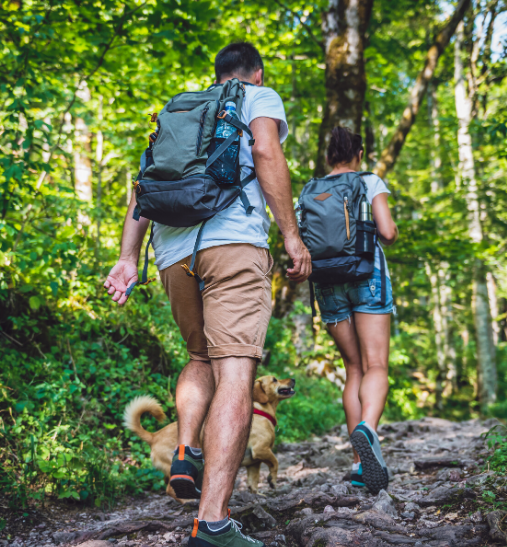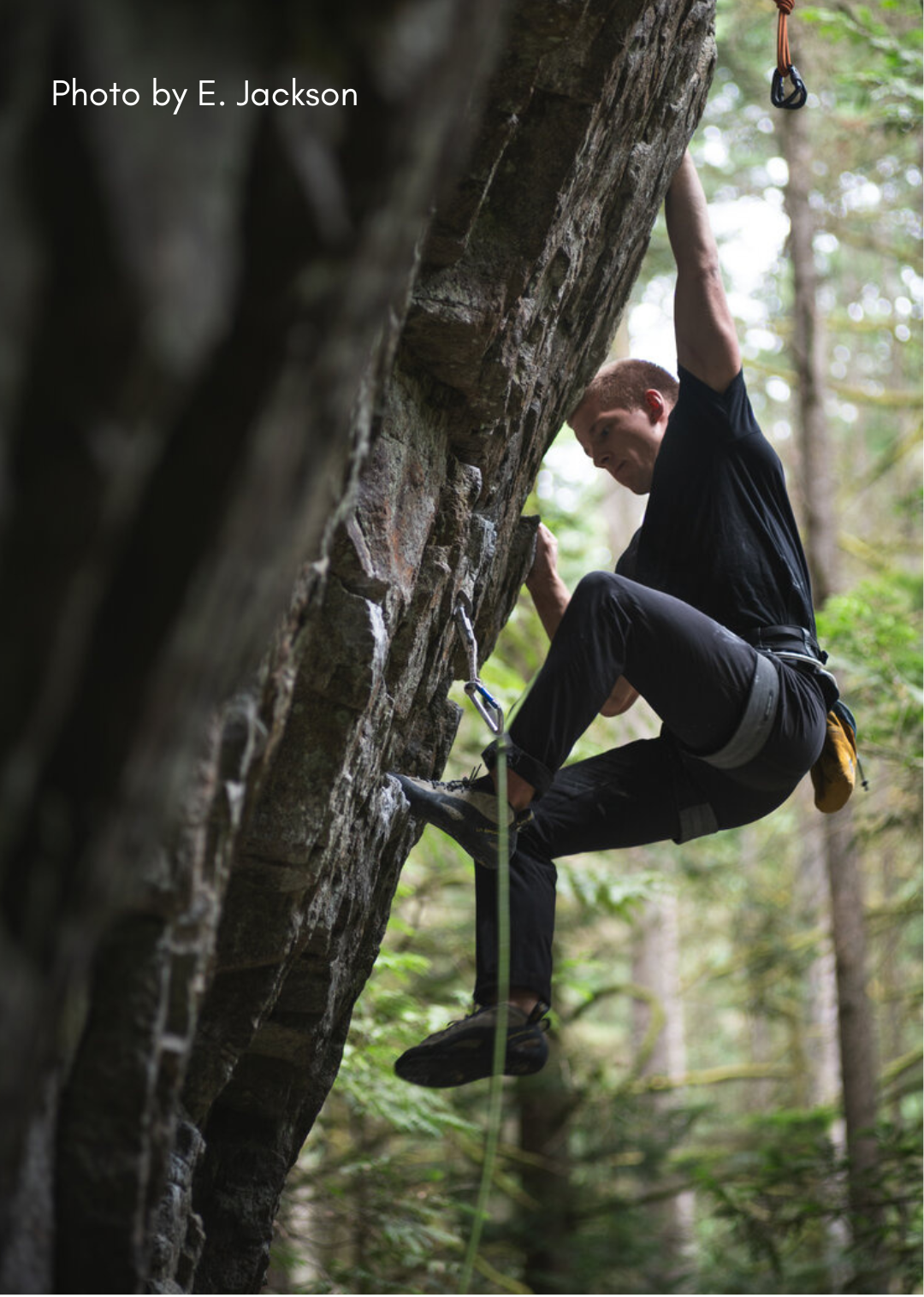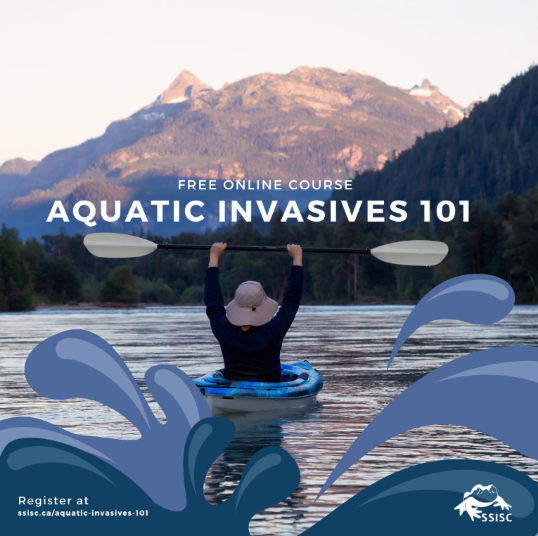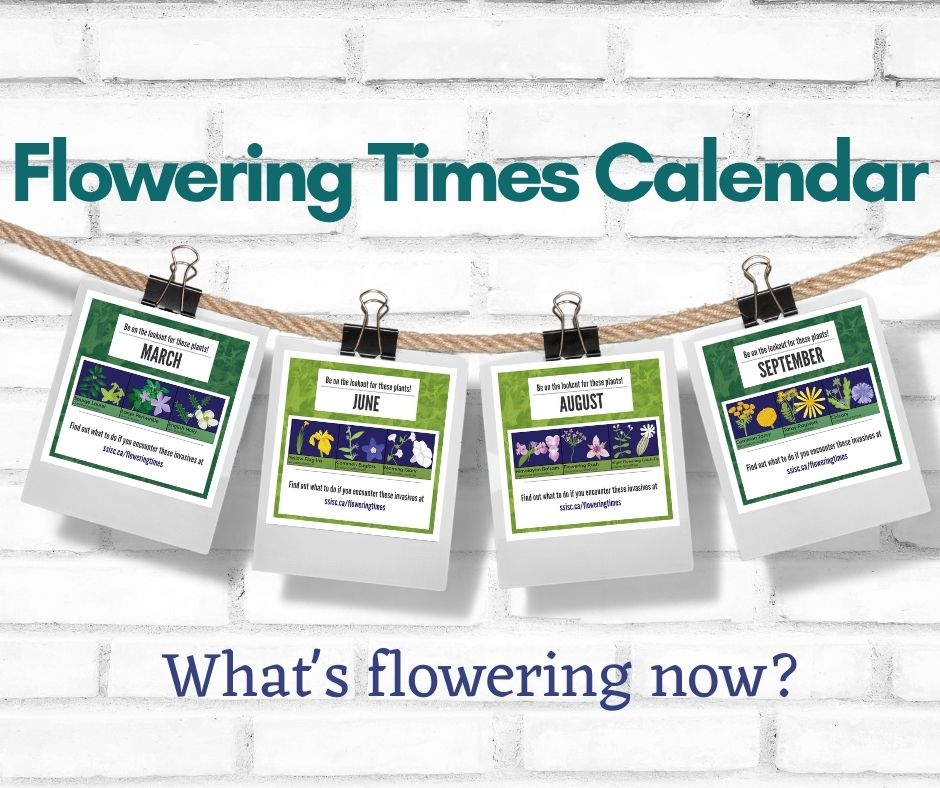
HIKERS & RUNNERS | DOG WALKERS | BIKERS | CLIMBERS | CAMPERS | BOATERS | REPORT YOUR SIGHTINGS | FAQs | SUPPORTERS | LINKS
Invasive plants and animals are a threat to our local trails. They can grow rapidly and form monocultures, which out-compete native species and disrupt the natural processes of our ecosystems. Invasive species can also be toxic to humans and animals, and have significant economic impacts.
Learn how you can help protect BC’s beautiful trails, campgrounds, and recreational sites from invasive species.
STOP INVASIVE SPECIES IN YOUR TRACKS
- REMOVE plants, animals & mud from boots, gear, pets & vehicles.
- CLEAN your gear before entering & leaving the recreation site.
- STAY on designated roads & trails.
- USE CERTIFIED or local firewood & hay.
Play Clean Go is an education and outreach campaign for outdoor recreationalists that encourages outdoor recreation while protecting our valuable natural resources. The objective is to slow or stop the spread of terrestrial invasive species (those that occur on land) through changes in our behaviour.
Hikers & Trail Runners
Come Clean, Leave Clean.

Dog Walkers
Leave invasive species behind.
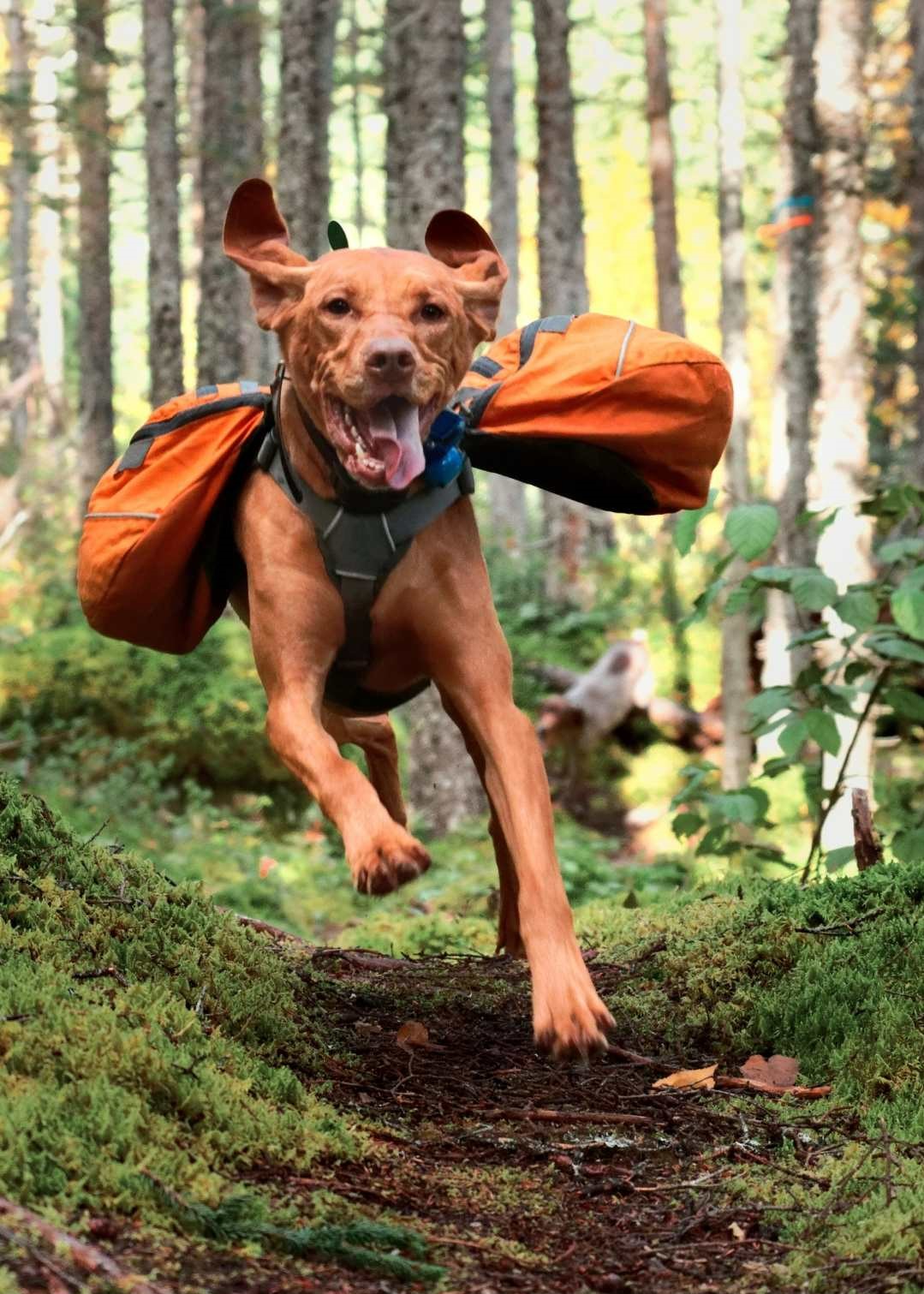
Mountain Bikers
Stop invasive species in your tracks.
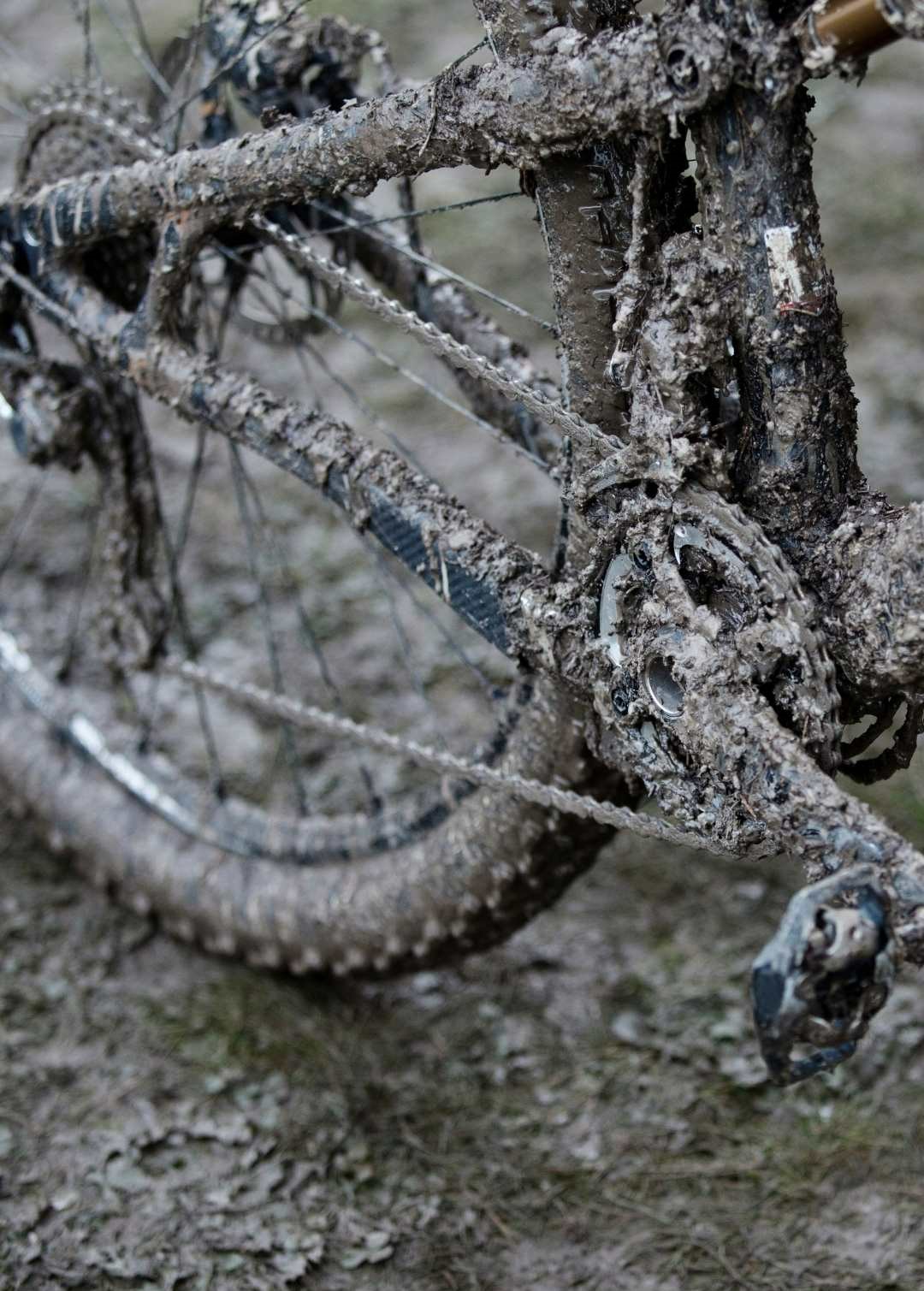
Hikers & Trail Runners
Come Clean, Leave Clean.

- REMOVE plants and mud from trail runners, clothes & gear.
- BRUSH off any seeds clinging to you or your pet.
- STAY on designated roads & trails.
- REPORT any invasive species you come across.
Dog Walkers
Leave invasive species behind.
- REMOVE plants and mud from boots, clothes & gear.
- BRUSH off any seeds clinging to you or your pet when entering & leaving the recreation site.
- STAY on designated roads & trails.
- REPORT any invasive species you come across.
Mountain Bikers
Stop invasive species in your tracks.
- REMOVE plants and mud from bikes, shoes, gear, pets and vehicles.
- STAY on designated roads & trails.
- REPORT any invasive species you come across.
Climbers
Give invasive species the brush off.
- REMOVE plants and dirt from rope, approach shoes, backpack, and other gear.
- STAY on designated roads & trails.
- REPORT any invasive species you come across.
Campers
Whether you use a tent, RV, or nothing but the clear blue sky, it’s important to not accidentally move invasive species from place to place, particularly in firewood.
Buy Local, Burn Local
Don’t move firewood!

Moving firewood, to or from a campground or cabin, can spread invasive species and diseases that can destroy our forests and harm our air and water. Protect our forests by keeping firewood local.
- Buy it local – buy firewood at or near your destination to ensure that you are not introducing invasive pests or diseases.
- Burn it local – if you accidentally brought any non-local firewood with you, use it first and burn it completely. It’s always safest to burn local firewood only!
- Leave it local – if you have firewood left over from your stay, leave it behind for the next visitor. Avoid transporting firewood long distances.

Come Clean, Leave Clean
- Come clean – before leaving home, take a little time to inspect and remove dirt, plants, and bugs from clothing, boots, gear, pets, and vehicles.
- Leave clean – before leaving your campsite, check your belongings and remove any dirt, plants, or bugs. Invasive plant seeds can be stuck on you or your belongings.

Clean Drain Dry
Aquatic invasive plants and animals are a threat to our local waterways. Help us protect BC’s abundant rivers, lakes, and marine ecosystems by following these steps:
- CLEAN off all plant parts, animals, and mud from boat and equipment (e.g. boots, waders, fishing gear). Use a power wash station if available.
- DRAIN onto land all items that can hold water (e.g. buckets, wells, bilge, and ballast).
- DRY all items completely before launching into another body of water.
Aquatic Invasives 101
If you spend lots of time around lakes, rivers, or the ocean, consider taking our free Aquatic Invasives 101 course.
In just 30 minutes, you can learn about 9 different aquatic invasive species – how to identify them, their impacts and current distribution within the Sea to Sky, and how you can protect our community by preventing further spread. The Aquatic Invasives 101 course is completely free, online, and family-friendly.
Report your sightings
We need you to be our eyes and ears! By recording the plants and animals that you come across during your adventures, you can help document and stop the spread of invasive species.
It’s easy, and all you need is your phone!
Thank you for your support!
Thank you to the following businesses who are participating in our 2024 Play Clean Go campaign:
Links
What’s Flowering Now?
Be on the lookout for invasive plants flowering in the Sea to Sky!
The Flowering Times Calendar is a fun way to highlight some of the interesting, invasive plants that may catch your eye during your adventures.


